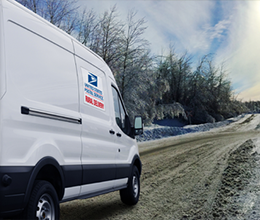
Driving the Rural Delivery Route
The U.S. Postal Service has almost 80,000 rural delivery routes serviced by some 133,000 rural letter carriers. For some of those routes, USPS provides the vehicle; for others, the carrier uses a private vehicle and receives a maintenance allowance from the Postal Service for wear and tear. In fiscal year (FY) 2020, the Postal Service paid out nearly $583 million in maintenance allowances — a rise of $71 million, or 13 percent, over FY 2015.
Not long ago, the Postal Service started converting some private-vehicle rural routes to USPS-vehicle routes, estimating the change would save $888 million over six years. For a recent audit, we reviewed a sample of these completed conversions nationwide as well as future conversions, and found that the Postal Service’s strategy for these changes was generally effective. We also discovered a few shortcomings.
For instance, maximum savings weren’t realized because USPS wasn’t implementing conversions in a timely manner, and we determined that some of the future conversions wouldn’t be the most cost-effective. We made a couple recommendations to improve the process, and Postal Service management agreed with both.
Are you a rural letter carrier, or do you know one? How does a USPS-vehicle route compare with the private-vehicle route? Does one seem more cost-effective from your point of view?

Leave a Comment
Also, I did have a Metris on an Aux route last year. Completely useless in any non-perfect road conditions. No traction, no weight, a turbo that spins out all grave/dirt mailbox areas.
You can get most of your packages in a LLV or Van. You also have room for three trays in a Gov vehicle.
No worries for the carrier on maintenance. I had engine and a transmission replaced in same year. A lot of undo stress.
And lastly no more sitting in the middle or having to put in a conversion kit. I still have back pain from sitting in middle. Who can afford 2400 on a conversion. That eats up your EMA in a hurry when your an RCA.
It is UNREALISTIC to expect a new hire to put out that kind of money.
Government vehicles are the only way to go. The carrier is behind the wheel, belted in not stretched across the front seat with their left foot pushing the gas and brake pedal. Government vehicles can have better signage and strobing lights to alert other drivers.
And why the metris? Why not ford's van in England? Or royal mails van? Or Honda or Toyota vans from Japan? Or Nissan truck from Australia? Why can't we use already in production RHD diesel vehicles that get 30-40mpg? UPS and FEDEX have no issue using these vans.
From my records. Using a POV cost me $2,700 a year out of pocket on a new vehicle. I can't imagine what it costs usps to run the metris let alone an llv.
The solution is simple, more GOV routes will equal more new hires and higher RCA retention. Provided the USPS actually gets vehicles that work in all climates. They may need some 4WD, some AWD and some can still be 2wd or front wheel drive. Common sense should be a guide here.
I'd say a no brainer to allow carrier to handle all that.
If a carrier receives 9000k in ema, I would guess its prolly close to a wash when factoring in above stated expenses. If the carrier has to replace their vehicle or has to pay for major repair transmission or engine then carrier exceeds the 9000k estimated ema in a given year. Fuel is approximately 4$ a gallon current times. id say 6000k for a 50mile a day route serviced days a week.
The reality is there is no options for a rural carrier to deliver in but older cars and a few suvs. There is only 1 new right hand drive option available to us and its a 50k jeep.
About time for the Postal service to become a truly professional organization and supply vehicles to all delivery routes.